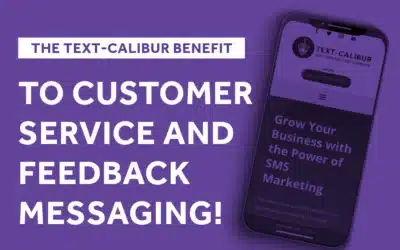Tired of watching potential customers slip through your fingers? It feels like you’re doing all the right things, but sales leads still get lost, ignored, or chased by the wrong people. This is a classic sign of a broken approach to lead management.
Without a solid system, you’re basically guessing. This chaos costs you time, frustrates your sales team, and kills your revenue. An effective lead management strategy changes all of that.

Table of Contents:
- So What Exactly Is Lead Management?
- Why Sales and Marketing Teams Can’t Stand Each Other
- A Better Approach to Effective Lead Management
- Step 4: Nurturing Leads Who Aren’t Ready
- Stop Guessing and Start Automating
- Conclusion
So What Exactly Is Lead Management?
Think of lead management as the structured journey you create for a new lead. It’s the systematic approach to capturing, tracking, qualifying, and nurturing them. The ultimate goal is to turn them from curious strangers into happy customers.
This is not just about collecting names in a spreadsheet; it’s a deliberate management process. A good process makes sure every single sales lead gets the right attention at the right time. The journey begins with the initial contact and continues through the entire sales cycle, building a strong customer relationship along the way.
Many businesses get this wrong by seeing leads as just a number. This shortsighted thinking is why so many sales funnels feel empty and conversion rates plummet. True success comes from a focus on relationship management from the very start.
It is also critical to handle customer information correctly from day one. Proper lead management involves respecting data privacy and following all applicable data privacy laws. Building trust starts with how you handle the first-party data they share with you.
Why Sales and Marketing Teams Can’t Stand Each Other
Ever seen a marketing team celebrate a huge number of new leads? And then seen the sales team complain that all those leads were junk? This is a story that plays out in businesses every single day, highlighting a major breakdown in the lead management process.

Marketing and sales often operate on two different planets. Marketing talks about clicks, impressions, and lead generation from their marketing efforts. The sales process, on the other hand, is all about demos, qualified leads, and closed deals.
Without a shared system, there’s no single source of truth. Research from Forbes highlights how this misalignment can seriously hurt growth. A good lead management system forces both teams to agree on what a good, qualified lead actually looks like.
To align sales and marketing, many successful companies develop criteria in a Service Level Agreement (SLA). This document clearly defines the responsibilities of each team. It specifies the number and quality of leads marketing must deliver and how quickly the sales reps must follow up.
Prioritizing the Wrong People
What happens when your teams aren’t aligned? Your salespeople waste their precious time. They end up calling leads who were never going to buy in the first place, which is a frustrating experience for any sales rep.
Meanwhile, the perfect customer who just needed a little nudge gets ignored. They were ready to buy, but nobody knew. This isn’t just inefficient; it’s a recipe for burning out your best sales reps and creating a longer sales cycle for everyone.
Your team should focus its energy on the people most likely to convert. But how do you know who those people are? It comes down to using clean data for qualifying leads and understanding their pain points early in the conversation.
A Better Approach to Effective Lead Management
You need a framework that moves leads through your sales funnel smoothly. This is where you separate the tire kickers from the serious buyers. Let’s break down the critical steps for an effective lead management system.
Step 1: Capturing Leads the Smart Way
Leads can come from anywhere. They might fill out a form on your website after reading a blog post, respond to an email marketing campaign, or engage with your brand on social media. They could click on an SMS campaign or even call your business directly.
The first step in a solid lead management process is to have a central place for all this information. A scattered system with data in multiple spreadsheets leads to lost details and missed opportunities. A crm software or a dedicated management crm like LeadBranch works as a central database to pull all these interactions together.
Such a tool captures data from pop-up fields, SMS clickers, and more. This gives you a complete picture of every potential customer and lets you track lead activities from the very first touchpoint. Centralizing lead activities is fundamental to understanding their journey.
Step 2: Scoring and Qualifying Leads
Not all leads are created equal. Some are ready to talk to sales right now, representing high-quality leads that need immediate attention. Others are a good fit but need more time and information before they are ready to purchase.
This is where lead scoring comes in. You assign points based on who they are (demographics) and what they do (behaviors). This systematic approach helps in qualifying leads with objectivity rather than gut feelings, leading to a higher lead conversion rate.
For example, you can develop criteria for scoring. A lead from a target industry might get points for their job title or company size. A different person might get points for their behavior, like visiting your pricing page, downloading a whitepaper, or opening every email you send. This scoring system helps you identify a qualified lead efficiently.
A system like LeadBranch helps you filter these leads. You can sort them based on custom demographic info like marital status, credit score, or even nationality. This gives you incredible power to find your ideal buyer among all the sales leads you generate.
Step 3: Distributing Leads to the Right Reps
Once a lead is qualified, it needs to get to a salesperson fast. Studies from Harvard Business Review show that firms that contacted potential customers within an hour were nearly seven times as likely to qualify the lead. Speed is a critical component of successful lead conversion.

Manual lead distribution is slow, inconsistent, and often unfair. A hot lead can sit in a shared inbox for hours or days, rapidly losing interest. Marketing automation within a good management software fixes this problem by automating lead distribution.
You can set up rules to send leads to the right person instantly. You might route leads based on territory, industry, product interest, or even sales rep availability. This ensures every hot lead gets immediate follow-up, which dramatically increases your conversion rates.
Step 4: Nurturing Leads Who Aren’t Ready
What about the leads who are a good fit but not ready to buy today? You can’t just forget about them, as doing so means leaving future revenue on the table. These are your future customers, and they require a different approach.
Lead nurturing is the process of building a relationship with them over time. Lead nurturing involves giving them helpful content, sharing success stories, and staying on their radar without being pushy. This thoughtful communication builds trust and establishes your company as a helpful authority.
When they are finally ready to make a decision, you’ll be the first company they think of. Nurturing leads is how you build a healthy, long-term pipeline, especially for products or services with a longer sales cycle. A personal touch in your follow-up can make all the difference in these cases.
Stop Guessing and Start Automating
Does all of this sound like a lot of work? It can be if you’re doing it by hand, which is why manual methods are no longer viable for growing businesses. You shouldn’t be managing leads manually in today’s world.
Marketing automation is the only way to manage leads at scale. It removes human error, makes your entire process more efficient, and gives you back countless hours. An automated system powered by lead management tools connects all the dots for you.
It scores the leads, routes them to the correct sales reps, and helps you with nurturing leads without missing a beat. This saves time and frees up your team to focus on high-value activities. A crm tool can orchestrate this entire workflow seamlessly.
Here is how a manual process compares to an automated one.
| Feature | Manual Process | Automated Process |
|---|---|---|
| Lead Capture | Copying and pasting data. | Data flows in from all sources instantly. |
| Lead Scoring | Based on gut feelings. | Objective, data-driven scores. |
| Lead Routing | Slow, inconsistent email forwards. | Instant distribution based on rules. |
| Follow-Up | Often forgotten or delayed. | Timely and consistent messaging. |
The difference is huge. Automation lets you focus on lead management strategies and building relationships. It handles the repetitive tasks that bog down your team and lead to costly mistakes.
Powerful Tools for Modern Teams
Today, there are powerful lead management tools available to solve these problems. LeadBranch was built to act as the brain of your lead management operation. It is not just another contact list.
It’s a database that helps you filter and act on your data. You can find people who clicked on a specific text message, creating highly targeted segments. You can also clean data to make sure it’s accurate, which is essential for personalization and effective communication.
And it’s built to maximize communication. You can use it for smart time zone text messaging. This functionality makes sure your message arrives at a reasonable hour, no matter where your lead lives, showing respect for their time.
It also helps with responder messaging and lead qualification. These features let you run a sophisticated operation without a giant team. Strong lead management software empowers sales teams to work closely with marketing, sharing insights and data to improve the entire process.
The goal of great lead management is to make every prospect feel like they are your only one. With the right lead management tools, you can create a personalized experience that drives incredible results. You can get away from messy spreadsheets and disjointed systems for good.
Imagine having a dashboard where you see your best leads, ready to be contacted, with their full history of interactions visible. This is not a dream; it’s what modern tools like crm software and other management software can do for you. Proper lead tracking leads to smarter conversations.
Ready to finally get a grip on your leads and give your sales team the opportunities they deserve? You can stop letting good prospects go cold and start turning them into loyal customers. Good lead tracking ensures no one falls through the cracks.
LeadBranch gives you a powerful database to filter for the perfect leads based on detailed demographics like age, marital status, credit, home status, and so much more. You can pinpoint exactly who to talk to and when. It cleans your data, appends missing info, and powers all your SMS marketing needs. Stop wasting time on bad leads and discover how LeadBranch can transform your entire process.

Conclusion
In the end, you need to stop thinking about leads and start thinking about relationships. A powerful lead management strategy is what builds those relationships at scale. It aligns your teams, focuses your efforts, and gives you a predictable way to grow your business.
By implementing a clear lead management process, you move from chaotic guessing to data-driven decision-making. You empower your sales and marketing teams to work together, supported by automation and the right technology. Adopting a more structured system for lead management will change everything for the better.




